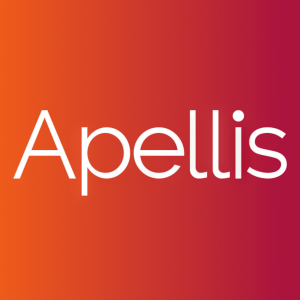Apellis Announces New Data Demonstrating Correlation between Complement Activation and COVID-19 Severity
Rhea-AI Summary
Apellis Pharmaceuticals (APLS) announced results from a 41-patient observational study showing that elevated systemic levels of C3a correlate with COVID-19 severity. In a Phase 1/2 interventional study, initial safety results from six patients indicate APL-9, a targeted C3 therapy, may improve outcomes in severe cases. Key findings include that 97.5% of patients had significantly high C3a levels, averaging 3.7 times the upper limit of normal. An independent committee recommended continuing the investigation of APL-9, which is currently enrolling 60 more patients.
Positive
- Preliminary safety results from a Phase 1/2 study support further development of APL-9.
- 97.5% of patients showed elevated systemic C3a levels, suggesting potential efficacy of APL-9.
- Independent committee recommended continuing trials for APL-9 based on preliminary results.
Negative
- One serious adverse event of respiratory failure unrelated to treatment led to a patient's death.
News Market Reaction 1 Alert
On the day this news was published, APLS declined 0.14%, reflecting a mild negative market reaction.
Data tracked by StockTitan Argus on the day of publication.
- Observational study in 41 patients hospitalized with COVID-19 found that nearly all patients had elevated systemic levels of C3a, a marker for C3 activation; median C3a levels were 3.7 times the upper limit of normal
- In a Phase 1/2 interventional study, preliminary open-label safety results in first six patients support advancement of APL-9, an investigational targeted C3 therapy, for severe COVID-19; additional 60-patient randomized, double-blind, controlled study cohort is currently enrolling
WALTHAM, Mass., Oct. 15, 2020 (GLOBE NEWSWIRE) -- Apellis Pharmaceuticals, Inc. (Nasdaq: APLS), a global biopharmaceutical company and leader in targeted C3 therapies, today announced observational study results that found a correlation between COVID-19 severity and complement overactivation, which is a key immune response. Additionally, preliminary open-label safety data from six patients in a Phase 1/2 study support advancement of APL-9, an investigational targeted C3 therapy designed for acute interventions, for severe COVID-19. These results also showed that key markers of inflammation were within or near normal range at the end of the APL-9 treatment period.
Observational Study Results
In the 41-patient observational study, data from 40 patients with evaluable blood samples demonstrated that increased complement activation showed a correlation with disease severity. C3a, C4a, Bb and terminal complement complex (TCC) levels each correlated statistically with COVID-19 severity as quantified by the National Early Warning Score (NEWS), a widely used assessment for the need for critical care. A similar correlation was observed with lactate dehydrogenase (LDH), C-reactive protein (CRP) and cytokine interleukin 6 (IL-6).
In addition, 39 (
“These study results demonstrate that multiple complement pathways are going into overdrive in severe cases of COVID-19, reinforcing the critical need for therapies that can regulate overactive complement and improve patient outcomes in COVID-19,” said Lukas Scheibler, Ph.D., Chief Innovation Officer of Apellis. “Targeting C3 has the potential to control complement activation across all three major pathways due to its central location, so we believe it is a strong target to continue exploring.”
Observational study levels of complement and inflammatory markers
| n = 40 | Median (range) | ULN | Multiple of ULN (median) | # patients >ULN (% of patients) |
| Bb, µg/mL | 1.37 (0.44, 6.22) | 1.49 | 0.9 | 16 ( |
| C3, g/L | 1.36 (0.82, 2.03) | 1.62 | 0.8 | 5 ( |
| C3a, ng/mL | 182 (34.8, 679.8) | 49.4 | 3.7 | 39 ( |
| C4, g/L | 0.39 (0.08, 1.11) | 0.52 | 0.7 | 7 ( |
| C4a, ng/mL | 1612 (658, 3000) | 1251 | 1.3 | 29 ( |
| TCC, ng/mL | 187 (109, 1034) | 244 | 0.8 | 11 ( |
| IL-6, pg/mL | 19.8 (2.22, 613.37) | 11.9 | 1.7 | 27 ( |
| CRP, mg/L | 50.8 (0.8, 361.5) | 4 | 12.7 | 36 ( |
| dLDH, U/L | 224 (107, 850) | 180 | 1.2 | 30 ( |
n=number of patients with evaluable assessments for each parameter. CRP, C-reactive protein; IL-6, interleukin 6; LDH, lactate dehydrogenase; TCC, terminal complement complex; ULN, upper limit of normal.
Preliminary Results from the Phase 1/2 Study
Apellis also announced preliminary results from the first part of the interventional Phase 1/2 study of APL-9 in patients with severe COVID-19. Of the six patients enrolled, all patients had elevated C3a and CRP levels and five of the six patients had elevated LDH levels at baseline. Five patients completed the study and were discharged from the hospital. Additionally, in these patients, C3a, LDH and CRP levels were within the normal reference range by the end of the APL-9 treatment period. Three patients experienced four treatment-emergent adverse events (TEAEs), which were all considered unrelated to study treatment. One serious adverse event of respiratory failure, which was considered unrelated to the study treatment, led to death from failed intubation.
Based on the results, an independent data monitoring committee recommended continuing the investigation of APL-9 in this study. Apellis is currently enrolling an additional 60 patients with COVID-19 and respiratory failure who require oxygen supplementation or mechanical ventilation into the randomized, double-blind, controlled phase of the study to evaluate the safety and efficacy of APL-9 (as add-on to standard care for up to 21 days).
Detailed results from both studies will be submitted for future scientific publication.
About the Observational Study
The observational exploratory study evaluated the relationship between markers of complement activation and disease severity in 41 patients with COVID-19. Patients in the observational study had blood drawn at baseline and at subsequent visits for up to six weeks. The primary objective of the observational study was to quantify systemic concentrations of the complement activation products Bb, C3a, C4a and terminal complement complex (TCC) and correlate them to COVID-19 severity. Secondary objectives were to quantify concentrations of C3 and C4 in serum and proinflammatory T-cell populations (CD4, CD8 and TH17) in whole blood and correlate them to COVID-19 severity. The exploratory objectives were to quantify the concentrations of interleukin 6 (IL-6) and C-reactive protein (CRP) in plasma and serum, respectively, and correlate them to COVID-19 severity. Additional detail and study results can be found on the Events and Presentations section of the Apellis website.
About the Interventional Phase 1/2 Study
The Phase 1/2 study (NCT04402060) is designed to evaluate the safety and feasibility of targeting C3 with APL-9 as an add-on therapy to standard of care in 66 patients with severe COVID-19. Patients included in the study have respiratory failure requiring oxygen supplementation or invasive or noninvasive mechanical ventilation. Patients are treated with APL-9 via intravenous (IV) infusion with an initial dose of 540 mg in the first 24 hours of dosing, followed by 360 mg/day on all subsequent days. The primary objective of the study is to assess the safety of APL-9 as an add-on to the current standard of care. Secondary objectives include evaluating length of stay in the hospital, overall survival, time on oxygen therapy or mechanical ventilation, and markers of complement activation, organ failure and coagulation (blood clotting). In the preliminary phase, six patients received open-label APL-9 treatment either until the end of study drug administration at day 7 or resolution of acute respiratory distress syndrome (ARDS). Based on the results, an independent data monitoring committee recommended continuing the investigation of APL-9 in this study. Apellis is enrolling an additional 60 patients into the randomized, double-blind, controlled phase of the study to evaluate the safety and efficacy of APL-9 (as add-on to standard care for up to 21 days). Additional detail and preliminary results can be found on the Events and Presentations section of the Apellis website.
About APL-9
APL-9 is an investigational drug designed to control the complement cascade centrally at C3 and may have the potential to treat a range of diseases caused by excessive or uncontrolled activation of complement. APL-9 leverages the same mechanism of action as Apellis’ lead compound, pegcetacoplan (APL-2), but has a lower molecular weight and shorter half-life. APL-9 is designed to be intravenously administered for acute use.
About Apellis
Apellis Pharmaceuticals, Inc. is a global biopharmaceutical company that is committed to leveraging courageous science, creativity, and compassion to deliver life-changing therapies. Leaders in targeted C3 therapies, we aim to develop best-in-class and first-in-class therapies for a broad range of debilitating diseases that are driven by uncontrolled or excessive activation of the complement cascade, including those within hematology, ophthalmology, nephrology, and neurology. For more information, please visit http://apellis.com.
Apellis Forward-Looking Statement
Statements in this press release about future expectations, plans and prospects, as well as any other statements regarding matters that are not historical facts, may constitute “forward-looking statements” within the meaning of The Private Securities Litigation Reform Act of 1995. These statements include, but are not limited to, statements relating to the implications of preliminary clinical data. The words “anticipate,” “believe,” “continue,” “could,” “estimate,” “expect,” “intend,” “may,” “plan,” “potential,” “predict,” “project,” “should,” “target,” “will,” “would” and similar expressions are intended to identify forward-looking statements, although not all forward-looking statements contain these identifying words. Actual results may differ materially from those indicated by such forward-looking statements as a result of various important factors, including: whether the company’s clinical trials will be fully enrolled and completed when anticipated; whether preliminary or interim results from a clinical trial will be predictive of the final results of the trial; whether results obtained in preclinical studies and clinical trials will be indicative of results that will be generated in future clinical trials; whether pegcetacoplan will successfully advance through the clinical trial process on a timely basis, or at all; whether the results of the company’s clinical trials will warrant regulatory submissions and whether pegcetacoplan will receive approval from the FDA or equivalent foreign regulatory agencies for GA, PNH, CAD, C3G, IC-MPGN, ALS, or severe COVID-19 or any other indication when expected or at all; whether, if Apellis’ products receive approval, they will be successfully distributed and marketed; and other factors discussed in the “Risk Factors” section of Apellis’ Quarterly Report on Form 10-Q filed with the Securities and Exchange Commission on July 30, 2020 and the risks described in other filings that Apellis may make with the Securities and Exchange Commission. Any forward-looking statements contained in this press release speak only as of the date hereof, and Apellis specifically disclaims any obligation to update any forward-looking statement, whether as a result of new information, future events or otherwise.
Media Contact:
Lissa Pavluk
media@apellis.com
617.977.6764
Investor Contact:
Sam Martin / Maghan Meyers
Argot Partners
sam@argotpartners.com / maghan@argotpartners.com
212.600.1902







